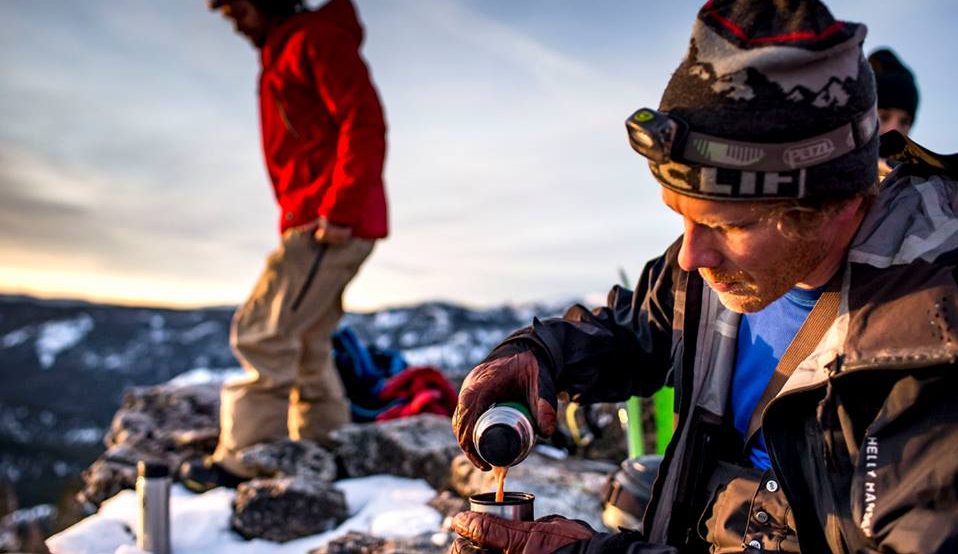
Let’s take a moment to look at the time and cost involved in a successful day of backcountry skiing or riding. First, there is the expensive equipment followed by avalanche safety gear and classes. Then you need the right partners, good weather, a proper snowpack and a full day off from work to get it done. Lining up these variables can be tough and the last thing you want is to ruin the perfect day in the mountains because you ate too much ice cream.
In fact, I truly believe that proper fueling will increase the quality of your day over any piece of expensive equipment or having the best knowledge of the area. Hiking and riding heavy vertical takes energy. Sustaining that energy takes fuel and with the right foods, you can go from reaching the summit once, to lapping and skiing lines all day long.
Basically, if you want to hurt less and perform well, prepare your body to do so.
Figuring out the best way to eat yourself into an efficient day of touring can be tough. Luckily I’ve made just about every mistake you can, so I’ve prepared some tips that anyone can use to ensure they have a properly fueled day in the backcountry.
Maybe Don’t Eat the Entire Box of Oreo’s
Regardless of what you bring with you if you’re coming off a diet of Double Stuffed Oreo’s and Gatorade be prepared to fail, miserably. A strong body to move quickly and efficiently in the mountains takes a balanced diet complete with macro nutrients (carbohydrates, fats & proteins) and micro nutrients (vitamins, minerals, enzymes.) You don’t need to be a health guru following a strict diet to accomplish this and build your body for optimal energy expenditure. When it comes to what you eat just think whole, unprocessed foods you would find on the perimeter of your local grocery store. Stay clear of the inside aisles or foods heavily refined and packaged that need a nutritional fact label to show you what’s inside.
I know those 57 ingredients in that $1.99 loaf of Banana bread sure do taste like Heaven but try to minimize their consumption.
Start Before You Go
The best thing you can do to prepare your body for the upcoming day is with a quality dinner balanced in protein, healthy fats, and some complex carbohydrates. Don’t overdo it on the pasta bowls and potatoes. Add in some chicken or fish and fresh veggies to help balance the meal and boost your immune system. Quality carbohydrates like sweet potatoes, quinoa, or brown rice will top off your glycogen stores which you’ll be accessing the following day when you get your heart rate up. Dinner the night before is the best time to consume the fuels that you’ll be using the following day.
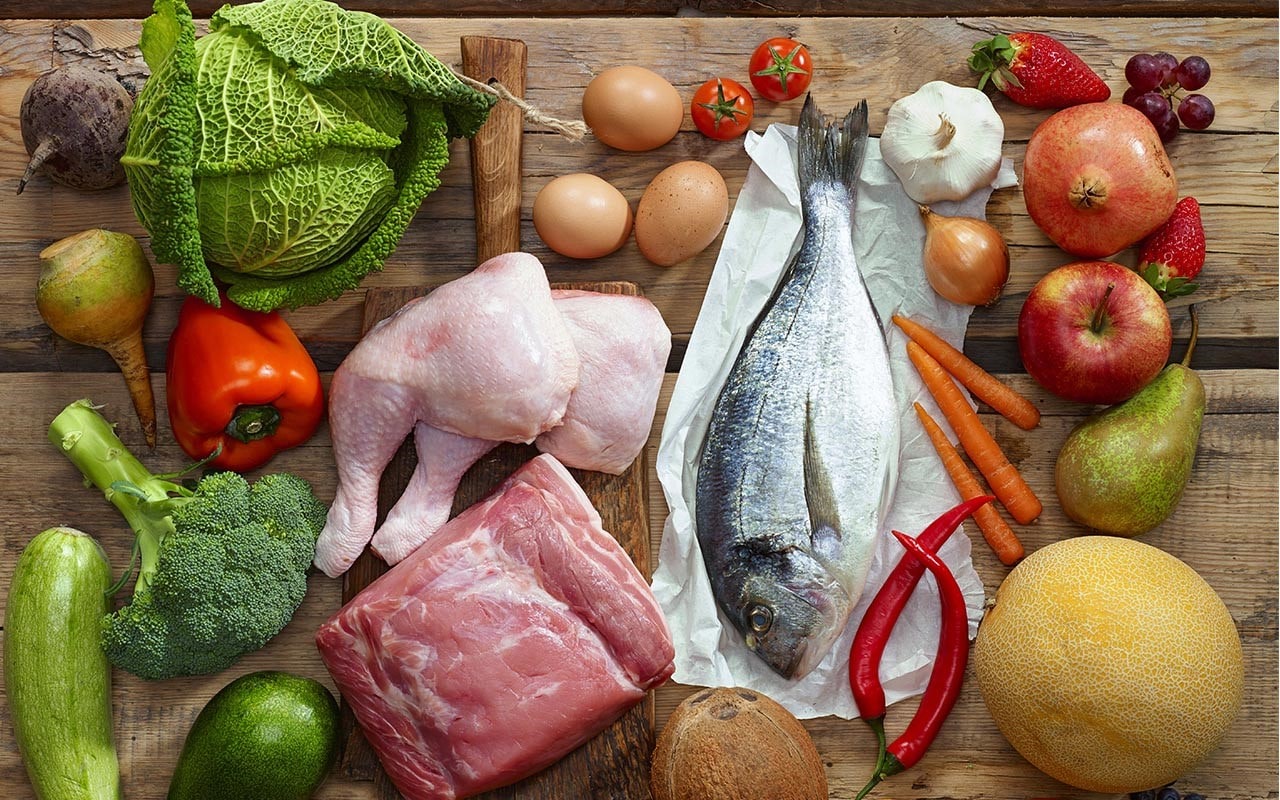
Continue preparation with a small breakfast. This is a good time to consume some slow burning complex carbohydrates such as whole grain oats or granola and some additional healthy fats. Half an avocado with eggs and coffee is my typical go-to. Feel free to add in some coconut oil or well-sourced MCT’s to your coffee for added fueling that doesn’t leave you bloated and full. Too often I’ll see friends downing a massive breakfast only to quickly become groggy, tired and constipated before we’ve bagged our first line. If you want to be light and quick on your feet keep your breakfast the same way.
Caffeine is a great way to start your morning but beware of caffeinated beverages that also contain high amounts of sugar. Two cups of coffee and a double espresso can get me moving rather quickly.
Hydration, Salt, And Electrolytes
If the human body can survive weeks and sometimes months without food but only a couple of days without water, then H20 is probably important. Start hydrating by polishing off a few glasses of water the night before and a full glass as soon as you wake up. While touring, the key is to stay hydrated by drinking before you get thirsty and drinking often. Once you become dehydrated it’s very difficult to catch up while maintaining movement. If you’re hiking a jump or mini gulf lines make sure to drink between each lap.
For someone like me who tends to sweat heavily and lose electrolytes quickly you’ll need to replenish those stores as you go. I like to use supplements like the Nuun tablets or Hammer Endurolytes’ capsules as they are small and simple. These work by replacing essential minerals lost in sweat such as sodium, chloride, potassium, and magnesium. For a cheaper option, you can add a few teaspoons of Himalayan pink salt to your water bottle. If you ever crave something salty or find yourself cramping, dizzy, or mentally confused you’ll know you are probably low in electrolytes.
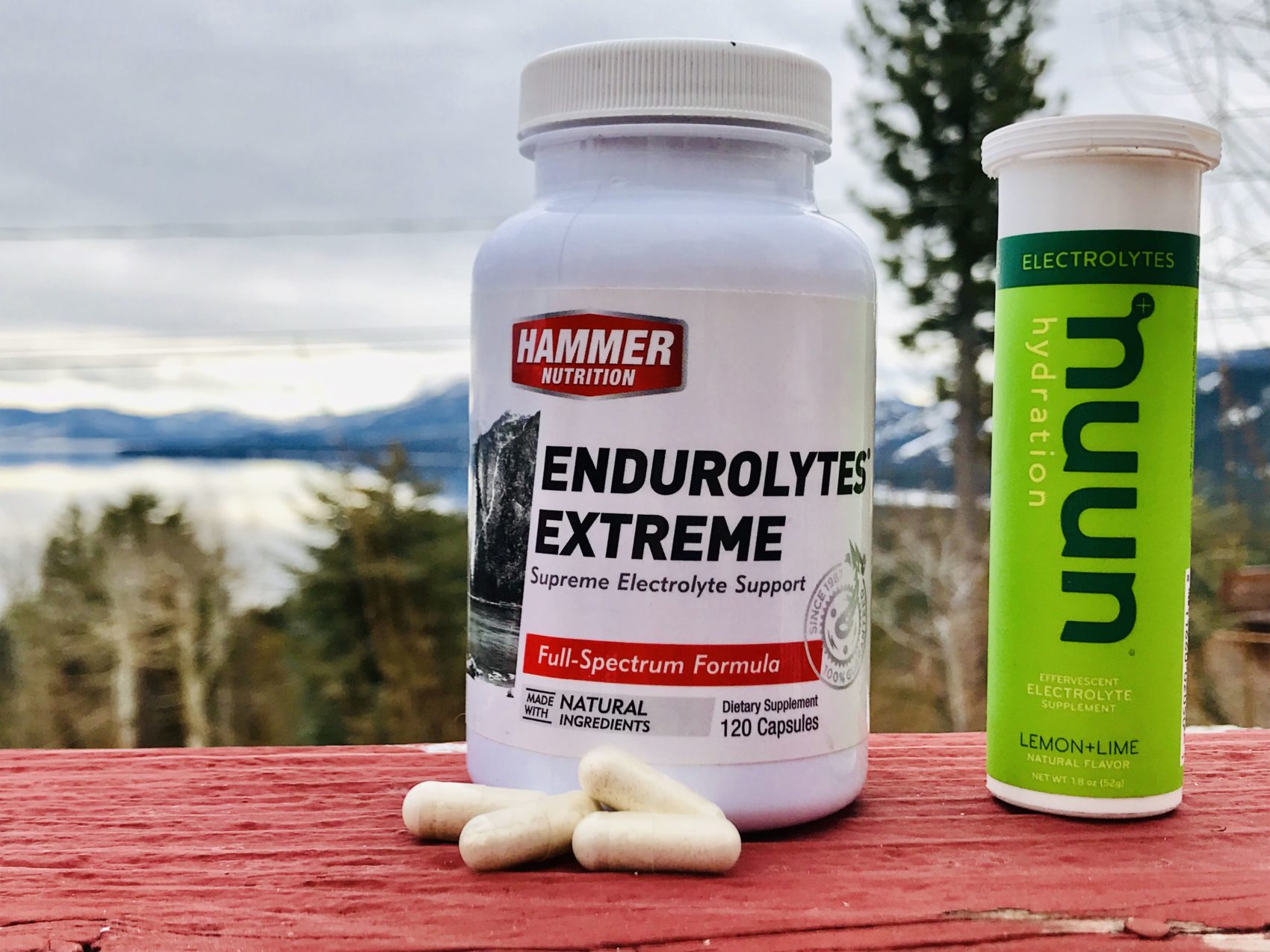
Always bring more water then you plan to consume. Typically for a long day in the mountains, two liters should be effective but more may be required from person to person. If you’re unsure on how much to bring you can use this water intake calculate for a good estimate.
https://goodcalculators.com/water-intake-calculator/
Plan For Your Adventure
What you eat and when you eat will depend on a variety of factors. Is this a long or short day? Fast or slow-moving? Just building and lapping a jump? Having a good idea of the overall temperament and goals of the group will help you assess your fueling needs.
When I’m out with my obnoxiously fit friends who are looking for fast vertical and high heart rate days, I know to bring an assortment of fast burning fuels ready for on-the-go eating. Being able to eat and replenish calories quickly lets you skip the breaks and spend more time riding. With a large group that will be taking more breaks, you might plan to bring some slower burning foods as you won’t be needing to replace carbohydrates so quickly. Assessing the pace of the day will help you fine-tune your fueling needs.
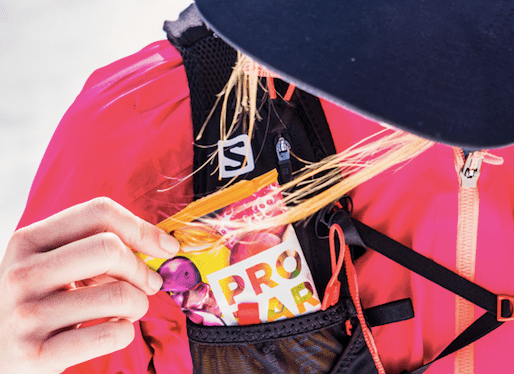
Also, consider the weather or possibility of delays. You burn more calories in cold temperatures and may need extra fuel if your routes change or length of the day is extended. Running out of food is never fun so always plan to have extra for when you may need it.
Caloric Density
You want as much energy as possible for the least weight. Figuring out the caloric density of foods will help you choose the best snacks for their energy to size ratio. This can be found by diving the calories of the food by its weight.
For example:
- 1 small orange has 45 calories and weighs 4oz; 45/4= 11.25
- 1 bagel w/cream cheese has 379 calories and weighs 4.72oz; 379/4.72= 80.29
- 1 ProBar has 370 calories and weighs 3oz; 370/3= 123.33
- 1 Larabar has 210 calories and weighs 1.58oz; 210/1.58= 132.91
- 1 serving of olive oil has 119 calories and weighs 0.5oz; 119/0.5= 238
In other words, a Larabar is ten times more efficient than an orange in its calories to weight ratio by providing more nutrients in a smaller space. A bagel with cream cheese scores seven times higher than the same orange but falls behind the ProBar, Larabar, and olive oil. Save the weight and space in your backpack by using fuels that are small and light while packing a calorie punch. Though I wouldn’t recommend carrying olive oil unless you’re on a high-fat burning diet. Or European…
Carrying caloric dense foods into the backcountry will be more useful and effective than heavier, lower calorie foods. Instead of having to spend $100-$200 more for the lightest weight pair of boots or bindings you can just re-adjust your fuel sources to achieve the same reduced weight for no cost at all.
When You Fuel Makes A Difference
Nutrient timing can make a huge difference in your energy levels throughout the day. For most backcountry athletes I would suggest taking in some sort of complex carbohydrate or quality fat around one hour into your day and every hour from there on out. I generally prefer to skip large meals and opt for these small snacks that help regulate energy levels and insulin spikes keeping me from that second or third lap energy crash.
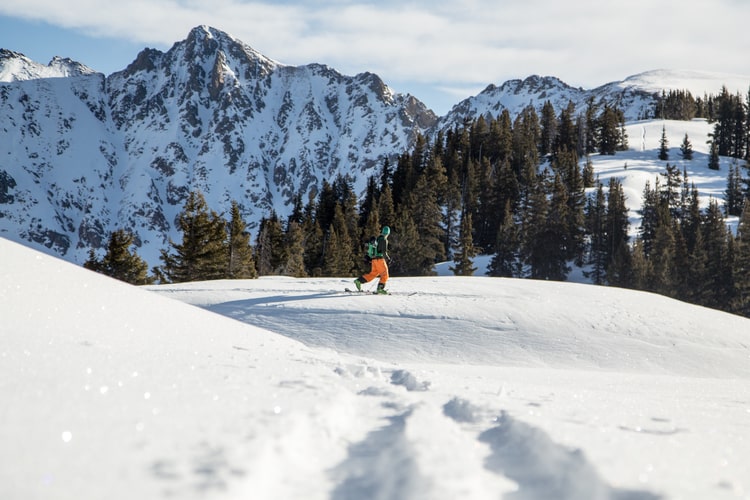
I also find it easier to fuel while moving up the skin track instead of in uncomfortable places like the top of windy peaks or in cold valleys. Eating while moving will allow you to cover more ground and elevation while also feeling energized and focused at the top before you ski. Keep snacks easily accessible in your pants or jacket pockets to fuel up quickly giving more time to focus on what really matter: bagging lines.
Try out a few different timing strategies and see what works best for you.
Balancing Your Blood Sugar: Save The Simple Carbs For The End
There’s one thing almost every doctor, nutritionist or health enthusiast can agree on: refined carbohydrates are bad. This includes sugars and added sugars like sucrose and high-fructose corn syrup which are contained in many sports drinks, energy bars, blocks, and gels. These refined carbohydrates are low in fiber, which digest and absorb quickly leading to rapid spikes in your blood sugar. When you eat foods high in simple sugars your energy will spike but the consequences of that quick energy burst is a crash in blood sugar soon after. This eventually leaves you tired and craving more high-carb, sugary snacks.
My suggestion is to use these simple, fast-acting carbohydrates like sugar as a tool and not as a primary source of energy. Save these sources for the end of your day where you might need the energy for one more run or to simply just make it home safely. If you’re on the edge of bonking or start to lose mental function for quality decision-making this is the time to reach in your bag for the sugars.
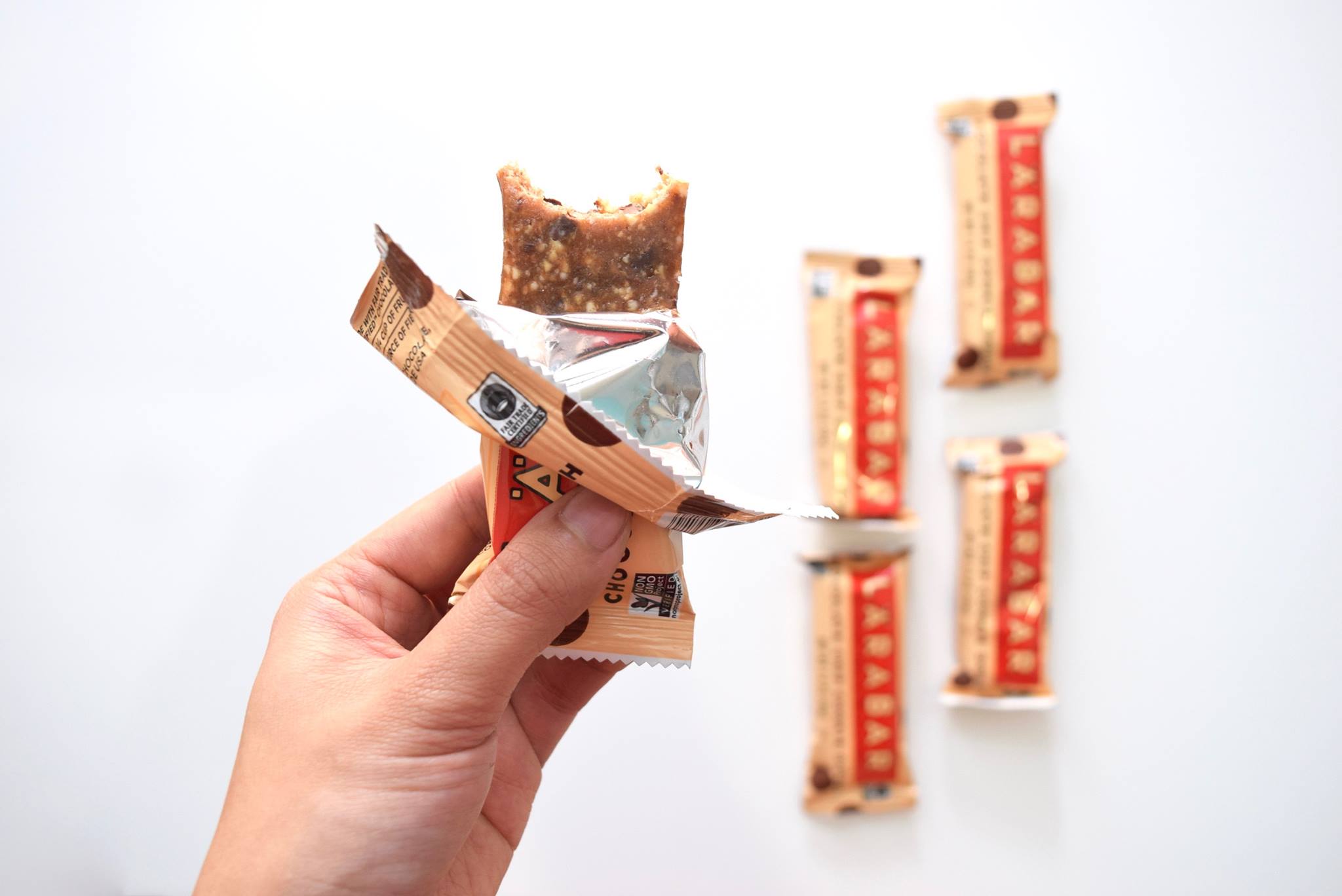
Just don’t start too early. Hold off on these quick energy sources until you really need them. Once you begin to fuel with sugar, your body will be craving it for the remainder of the day. Welcome to the blood sugar roller coaster, my friend.
Here Are Some Good Options To Try
Slow Carbohydrates and Fats
These are your go-to all day burning fuels that keep your energy level.
- Assorted nuts and seeds
- Cheese and sliced meats
- Nut Butters
- UCAN Superstarch
- Epic Bar
- ProBar Meal
- Cliff Bar
- Dark Chocolate
- Avocado
- Ezekiel Bread
Fast Carbohydrates
These are your fast burning sugars for a quick boost. Use sparingly and towards the end of your day.
- Fruit bar
- Gels without HFCS
- Honey stingers, wafers, and sticks
- Dried fruits and berries
- High-quality sports drink without HFCS
- UnTapped maple syrup gels
- Larabar
- Dried fruit
- Energy blocks without HFCS
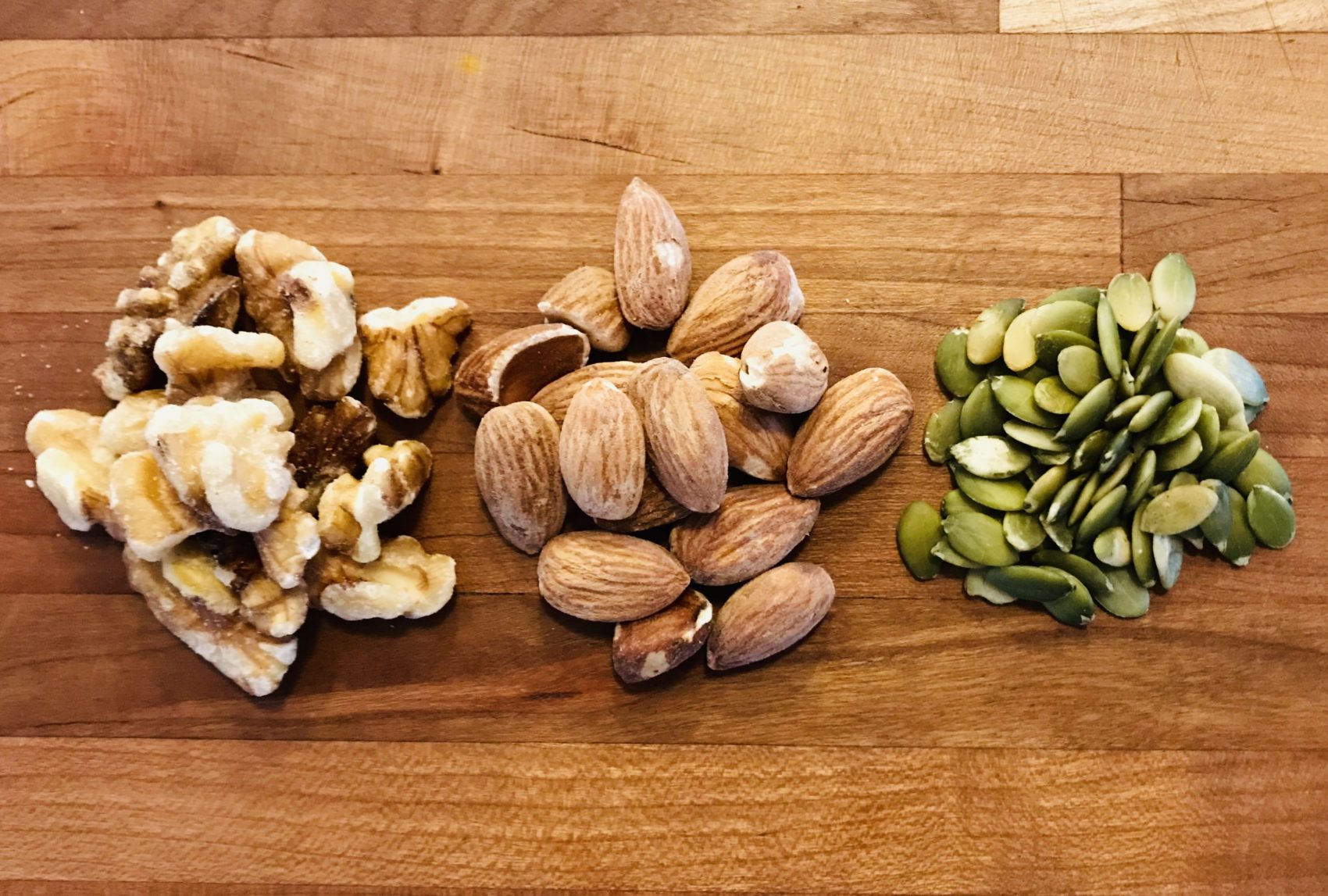
Fuel Up After You Finish
The best thing about touring and skiing powder all day is building up the appetite for a tasty meal, or two, that evening. Your body just spent hours burning calories and under a state of constant stress so give it the calories and nutrients that it needs to get you ready for the next morning. Make sure to eat a balanced meal with some well-sourced protein to help in rebuilding muscle damage and carbohydrates to top off your glycogen stores. As always drink plenty of water to promote a good recovery.
The celebratory drink is part of our ski culture and a great way to finish a day with friends but be cautious with having too many if you plan to get out the next day. Regardless of any hangover effects the ethanol in alcohol will hinder your bodies recovery process and stop its ability to store glycogen that you’ll be wanting to access soon. Just be smart with alcohol and don’t let too many ruin your next day big of skiing.
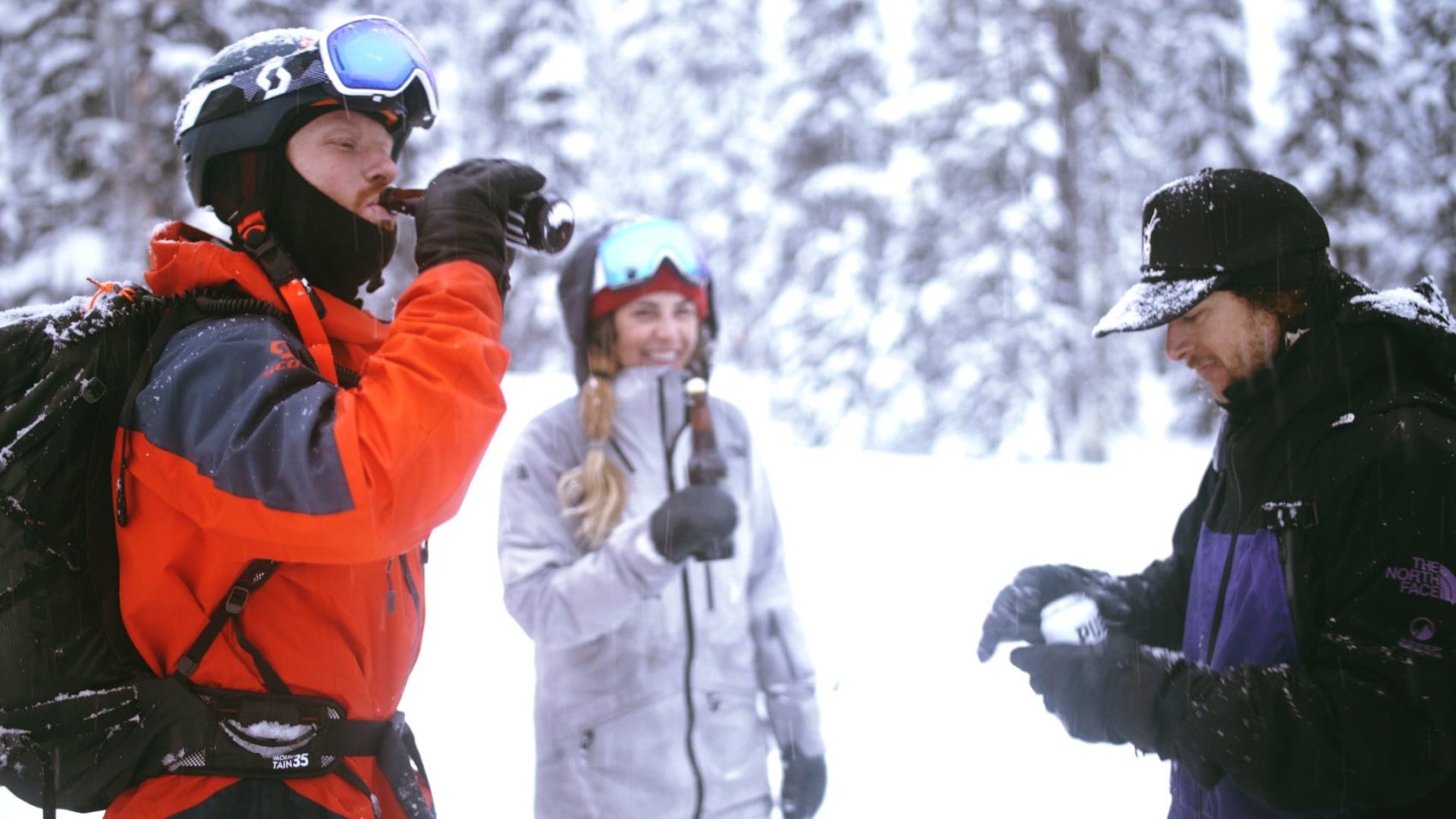
Doing what works the best for you is the only thing that really matters but I encourage you to find out what that really looks like. Over the last few winters, I’ve changed how I fuel up resulting in great days but also complete failures. The benefit of those failures is they allowed me to fine tune my fueling strategy and become confident in knowing it will work to keep me energized the entire time I’ll be in the mountains. There’s nothing stopping you from going hard all day and performing to the best of your ability. Don’t let a crap diet get in your way.
Alex K